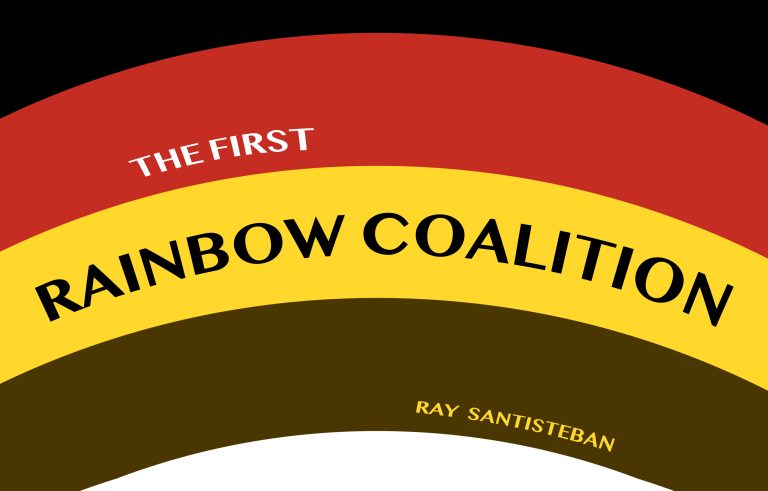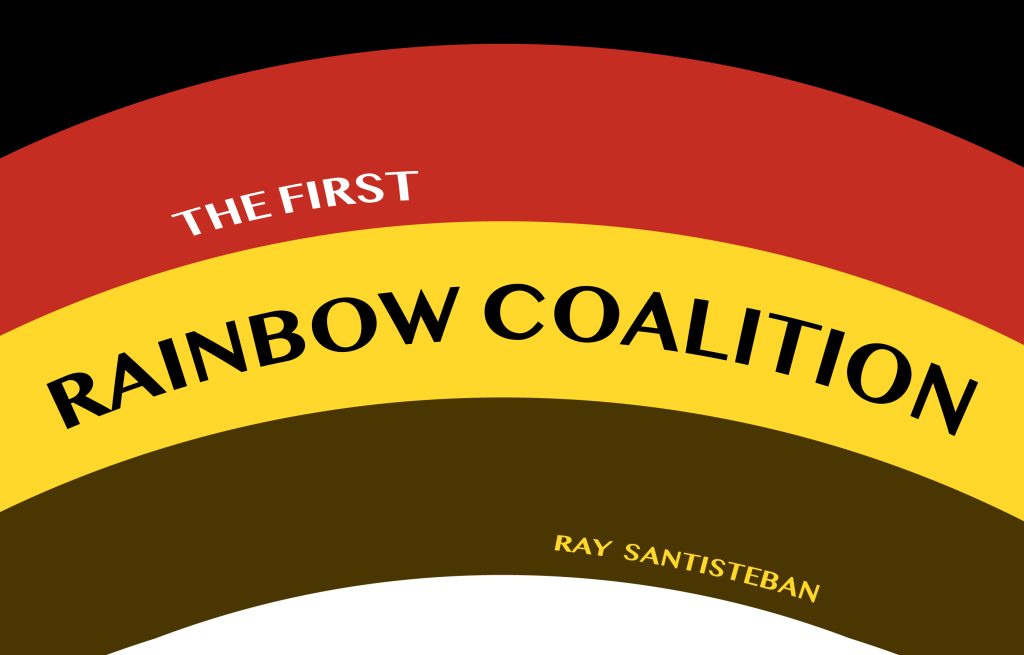
Audrey Rodriguez
Staff Writer
Ray Santisteban has been an auteur for most of his life, and there are two things he finds throughout all of his projects: first, that one has to “commit” and surrender to the process, and second, “You wish you could restart when you end.” The Bottom Line (TBL) followed along with Santisteban, his experience in documentation, and discussions of his latest work, “The First Rainbow Coalition.”
Santisteban lamented that you learn so much during the documentation process that by the time the film is made, you are already thinking about the many ideas you could have tried and the new directions you could have taken.
“The First Rainbow Coalition” was no different, an endeavor that took over a decade and mostly his own funding and camera work to make happen. It chronicles the beginnings of one of the first and most unlikely political coalitions in the United States, which also happened to be the most powerful at the time.

Many told Santisteban that there was no market for such a film. Thus, he was unsure who would pick it up for a significant portion of the pitching and filming process, or if it would air at all. Another preliminary problem he ran into was that there is “no market for Latino photage,” so there is not much archived. The documentary is now available on PBS Plus — while he was given a grant to create the film, they own the rights for the next two years or so. He now also has his own extensive archive of photage he hopes to sell to an institution to pad a retirement fund. Interestingly enough, he sourced much of the footage in this film from eBay.
Filmmaking is, thus, “a question of access and means.” Chicago in 1969 was one of the most diverse yet segregated cities of the time. Santisteban’s documentary uses interviews to examine and understand the coming together of the Latino gang, the Young Lords. This theme is presented through interviews with Josè “Cha Cha” Jimenez representing the Young Lords, Robert E. “Bobby” Lee representing the Black Panther Party, and the Young Patriots represented by Hy Thurman and Bobby McGinnis. The Young Patriots was composed of poor, Appalachian white people who donned the Confederate flag. These groups all found themselves in Chicago for the same reason everyone did at the time: promises of work.
Under the instruction of Fred Hampton, the Black Panther Party sent fellow Black Panther Lee, to try and form a coalition with the Young Patriots. They wanted to establish a class solidarity movement to provide social programs for the community and stand against Chicago mayor Robert Daley’s detrimental “Urban Renewal.”
The Black Panthers were inherently Marxist and anti-racist. The mantra they introduced to the Coalition, “All Power to All People,” is what allowed them to work alongside those who wore the very flag that represents hate. Fred Hampton and the Black Panthers believed that “racism is used for capitalism … class consciousness cuts across all strata.” The respective groups in the Coalition came together to facilitate free clothes drives, health clinics, and breakfast programs in a show of solidarity that shocked and threatened the local and federal governments.
Also interviewed in the film was a former police officer, news correspondent, historian, and many other community organizers. Santisteban had worked with police officer Howard Safford in a previous project and had come to know him as a dissenter of Major Daley’s orchestration of spying and attacking the Rainbow Coalition members. FBI agent Jack Ryan was one of only about five FBI agents who have ever spoken out against the Bureau, a feat he credits to being a devout Catholic. Ryan refused to conduct surveillance on Catholics during the anti-Sanctuary movement of the 1980s and was fired three months before he was slated to retire, thus receiving no benefits from the Bureau.
Documenting such a diverse group with seemingly conflicting values seems near impossible, but as a colleague of Santisteban’s once told him, “If you’re building a coalition and you are comfortable with everyone in your coalition, your coalition isn’t big enough.”
Santisteban cited some issues of accuracy in the film Judas and the Black Messiah (2021), but said their usage of the phrase, “People are Power,” illustrates this idea of discomfort being inherent to true coalitions well. He does point out that Fred Hampton was the protagonist of the film despite being only a fresh high school graduate during the timeframe in which the film was meant to take place.
It is widely believed that the FBI-led police raid of Hampton’s home that resulted in his murder was done at the behest of Mayor Daley and encouraged by the FBI Messiah memorandum from which the Hollywood film gets its name. Thus, their usage of Hampton as an entry point into discussing the government’s corruption at the time makes sense.
Many of those involved in the Young Patriots also had to go into hiding after moving back to the South for fear of violent retaliation like that which befell co-founder Jack “Junebug” Boykin’s brother. Boykin and his brother looked very similar, so when Hampton and Boykin were photographed together, someone mistakenly brutalized his brother. In Santisteban’s filmmaking process and subject matter, the difficulties lie in telling a story that, as he puts it himself, many “powerful people don’t want told,” are clear. Filmmaking is a frustrating but rewarding medium for that very reason. Santisteban “just wanted to hear and see the people.” This film functions as an entry point to discussions about the necessity for coalition, ending with a call to action against modern-day white nationalist movements. Many involved in the first Rainbow Coalition have passed or assumed normal civilian lives to avoid persecution, but the collaboration against all odds that they proved to be possible persists.










